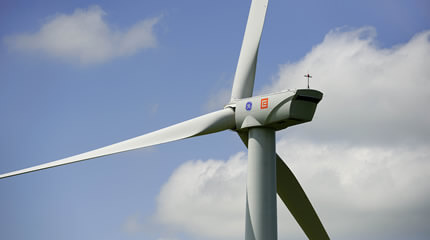Southwestern Electric Power Co. (SWEPCO), a unit of American Electric Power (AEP), announced a settlement agreement in the company’s request for approval of the proposed Wind Catcher Energy Connection project.

After a series of negotiation sessions with the APSC General Staff, the Arkansas Attorney General and other parties, SWEPCO agreed to provide a number of guarantees, including a cap on construction costs, qualification for 100% of the federal Production Tax Credits, minimum annual production from the proposed Wind Catcher Energy Connection project, and others.
The settlement agreement includes SWEPCO, the Arkansas Public Service Commission (APSC) General Staff, the Arkansas Attorney General, and Walmart Stores, Inc. and Sam’s West, Inc.
“Walmart has a goal to be supplied by 100% renewable energy, and sourcing from wind energy projects — like the Wind Catcher project — is a core component in the mix,” said Mark Vanderhelm, Vice President of Energy for Walmart. “The energy procured from this project represents an important leap forward on our renewable energy journey.”
By joint motion filed Feb. 20th, the parties asked Commission members to approve the project under terms of the settlement agreement.
The $4.5 billion Wind Catcher project includes an acquisition of a 2,000-MW wind farm under construction in the Oklahoma Panhandle and construction of a 360-mile dedicated generation tie line to the Tulsa area, where the existing electrical grid will deliver the wind energy to customers. SWEPCO will own 70% of the project. SWEPCO’s sister company, Public Service Company of Oklahoma (PSO) will own 30%. The SWEPCO Arkansas jurisdiction share of the project investment is $607 million.
After a series of negotiation sessions with the APSC General Staff, the Arkansas Attorney General and other parties, SWEPCO agreed to provide a number of guarantees, including a cap on construction costs, qualification for 100% of the federal Production Tax Credits, minimum annual production from the project, and others.
“We are extremely pleased with this settlement agreement because it recognizes the tremendous opportunity the Wind Catcher project provides for clean, low-cost energy and long-term savings for SWEPCO customers,” said Venita McCellon-Allen, SWEPCO President and Chief Operating Officer. “Our customers are looking to us to provide clean, reliable and cost-effective power. Wind Catcher will help companies, universities, cities and other customers meet their sustainability and renewable energy goals.”
SWEPCO anticipates that the project will save its customers more than $4 billion, net of cost, over the 25-year life of the wind farm.
Cost savings include no fuel cost for wind, which lowers SWEPCO’s overall fuel and purchased power costs; full value of the federal Production Tax Credit, which is available for construction of new wind farm projects; and the cost-efficient delivery of the wind generation to customers through the new, dedicated power line.
Customers will see savings primarily through a reduction in the fuel portion of their bills, beginning in 2021.
The economic impact of the project will include manufacturing of key components of the wind turbines in states served by SWEPCO. GE Renewable Energy, which will provide 800 of its 2.5-megawatt wind turbines for the Wind Catcher facility, anticipates that a significant number of turbine blades, towers and generator frames will be manufactured in Arkansas, Louisiana, and Texas.
Wind Catcher is the largest single-site wind project in the United States. The wind farm is under development by Invenergy in Cimarron and Texas counties in the Oklahoma Panhandle. SWEPCO and PSO will purchase the facility at completion, which is scheduled for the fourth quarter of 2020.
“The Wind Catcher project is tapping into one of the best wind resources in the country, and the dedicated power line will deliver the renewable energy efficiently, reliably and cost-effectively to our customers,” McCellon-Allen said.
Once the project is completed, renewable energy will comprise 26% of SWEPCO’s energy resource mix, up from the current 8%.
SWEPCO customers currently are served by 469 MW of wind power through long-term power purchase agreements with wind farms in the Texas Panhandle, western Oklahoma and south-central Kansas. The Wind Catcher project is subject to approval by utility commissions in Arkansas, Louisiana, Texas, and Oklahoma, as well as the Federal Energy Regulatory Commission.
Filed Under: News, Policy, Projects




